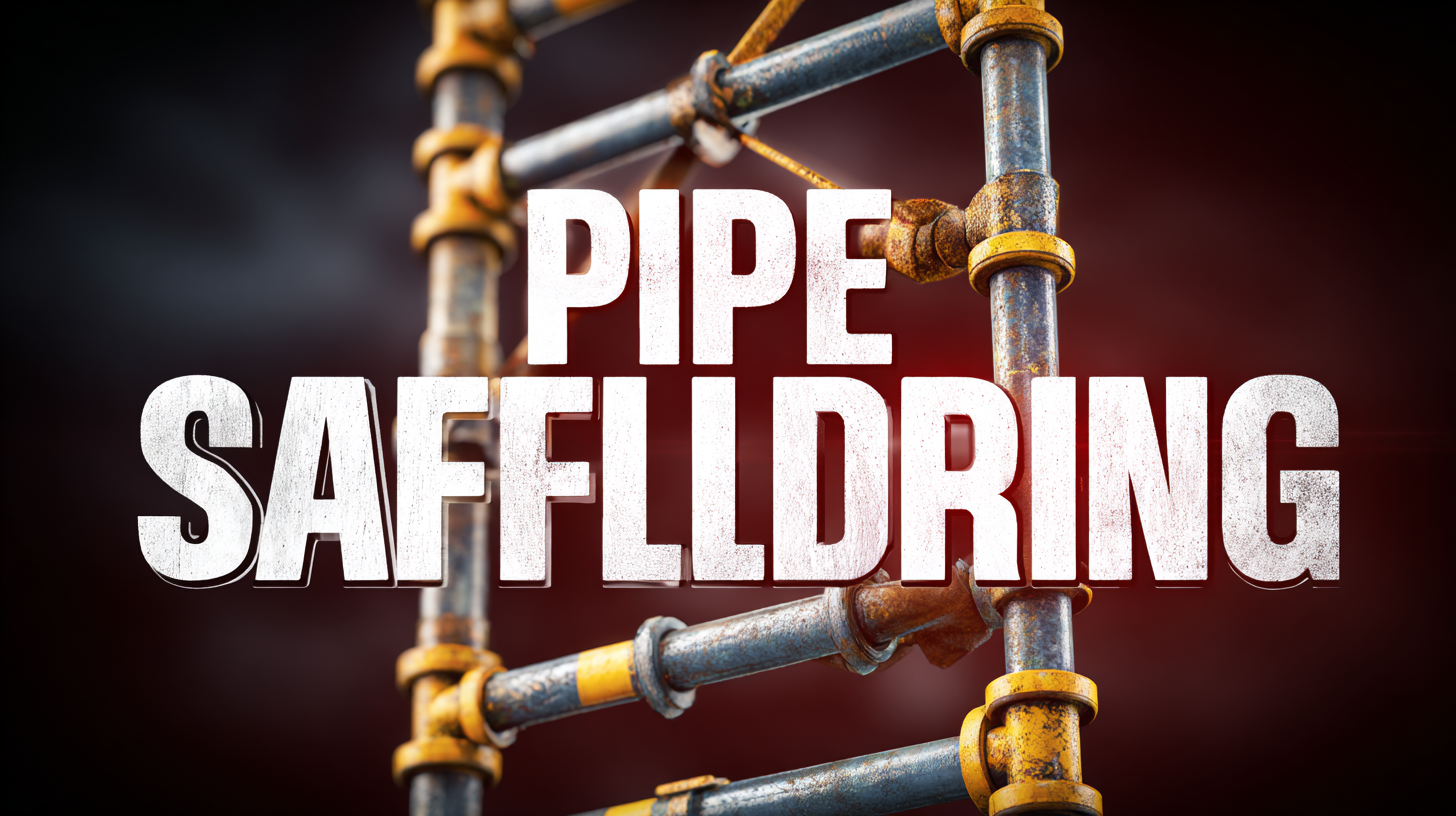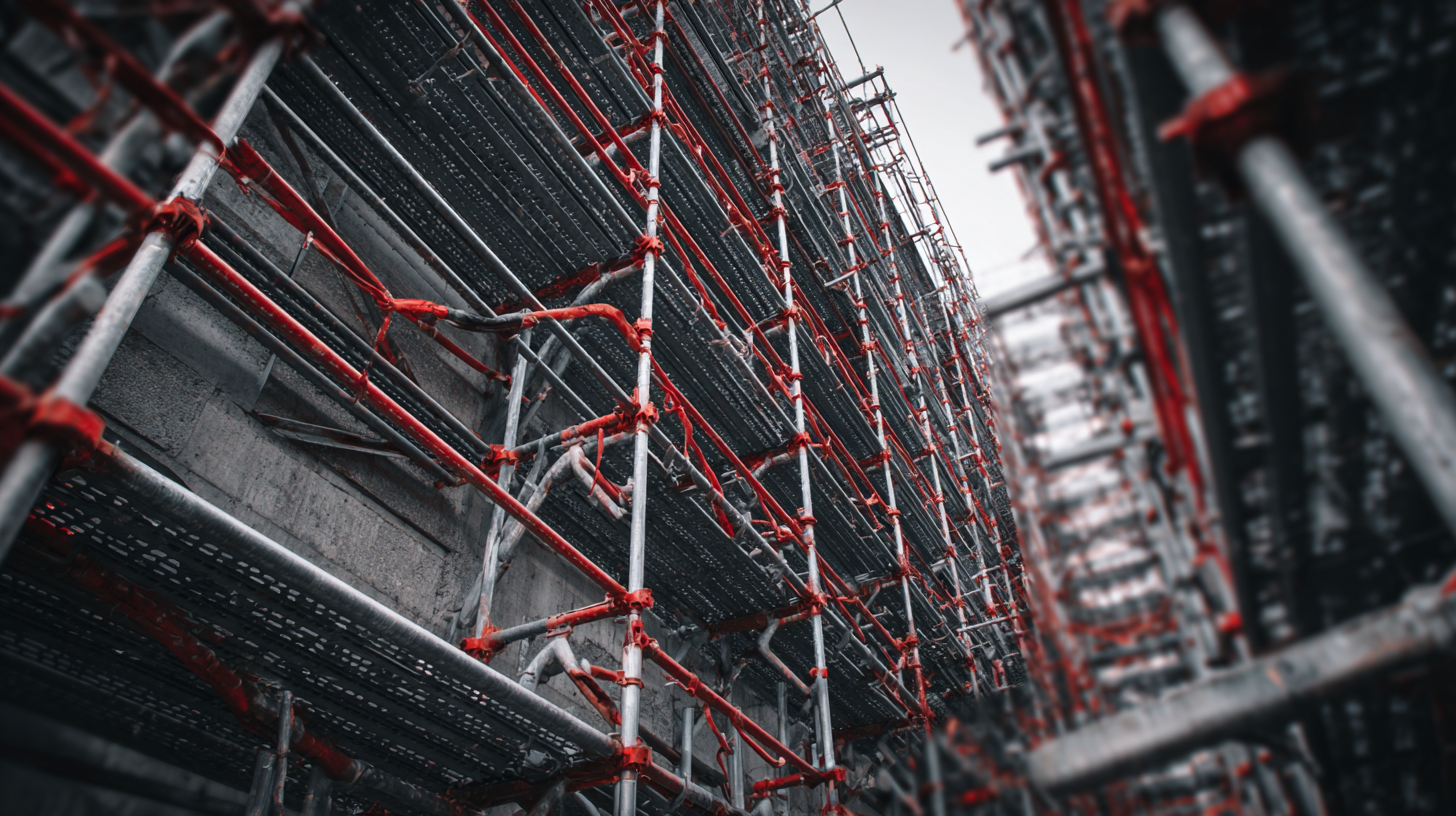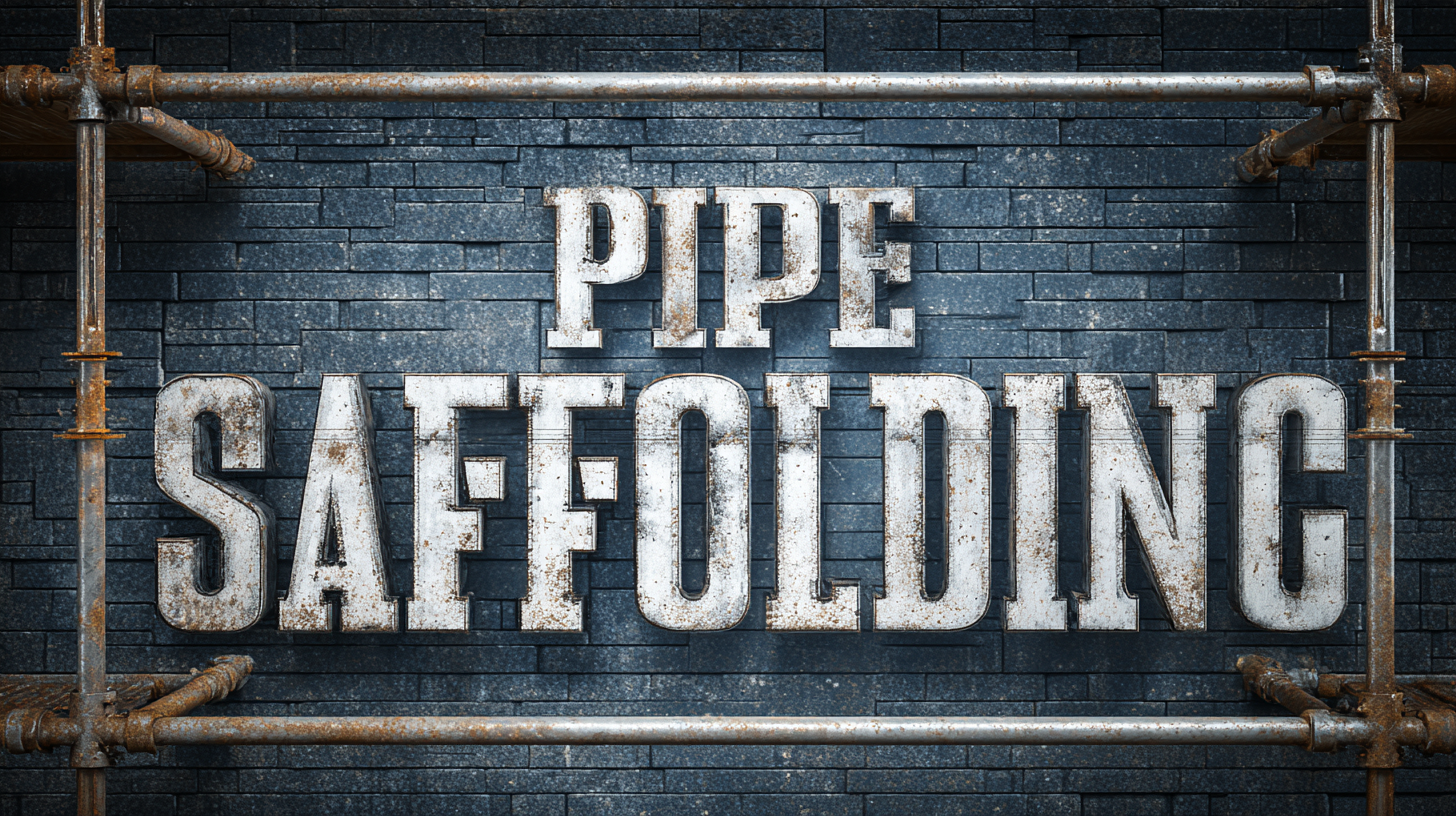 +86 18531741341
+86 18531741341
Leave Your Message
When it comes to construction projects, ensuring safety and efficiency is paramount, and one crucial element in achieving this is selecting the right pipe scaffolding. With a myriad of options available in the market, finding a quality supplier can be a daunting task. This guide aims to provide construction managers, contractors, and DIY enthusiasts with essential strategies and insights on how to source the best pipe scaffolding for their specific needs. From understanding the critical features to look for in scaffolding materials to evaluating potential suppliers' reliability and reputation, we will cover everything you need to know to make informed decisions. By following these guidelines, you can ensure that your construction projects are executed safely, on time, and within budget, while maximizing the effectiveness of your pipe scaffolding systems.

Pipe scaffolding is an essential component in the construction industry, providing a versatile and reliable support system for various projects. Understanding the basics of pipe scaffolding is crucial for contractors and project managers alike. This type of scaffolding is constructed using strong steel pipes and couplers, allowing for a robust and adjustable framework that can be tailored to the unique requirements of each site. The modular design means it can be easily assembled and disassembled, making it an efficient choice for both large-scale and smaller projects.
One of the significant benefits of using pipe scaffolding is its exceptional load-bearing capacity. With the ability to support heavy materials and equipment, it ensures safety for workers at height. Moreover, its adaptability allows for multiple configurations, catering to various construction needs, whether it’s for residential buildings or industrial sites. Additionally, pipe scaffolding is often more cost-effective than other types, providing a durable solution without breaking the bank. By understanding these fundamentals, construction professionals can make informed decisions when sourcing the best pipe scaffolding for their projects, ultimately leading to safer and more efficient work environments.
When sourcing pipe scaffolding for construction projects, it’s essential to consider several key factors that can significantly impact both safety and efficiency. According to a report by the Scaffold & Access Industry Association, proper scaffolding usage can reduce construction-related accidents by up to 30%. Thus, ensuring that your chosen scaffolding meets industry safety standards is non-negotiable. Look for products that are compliant with OSHA regulations and have been tested for load capacity and durability, as these factors are critical for maintaining worker safety on-site.
Material quality is another crucial consideration when selecting pipe scaffolding. Research indicates that steel scaffolding, while heavier, offers superior strength and longevity compared to aluminum alternatives, particularly in heavy-duty applications. A study by the Construction Industry Institute highlights that utilizing high-quality materials can result in a 25% longer lifespan for scaffolding systems, which translates to significant cost savings over time. By focusing on these key factors—regulatory compliance and material quality—you can ensure that your scaffolding choice supports not only the structural integrity of your projects but also the safety and productivity of your workforce.

When it comes to selecting the best pipe scaffolding systems for construction projects, understanding the variety of options available is crucial. According to a report by the Occupational Safety and Health Administration (OSHA), approximately 65% of construction workers engage in scaffold-related work. This underscores the necessity for reliable and robust scaffolding systems that meet safety standards while providing versatility and durability. Pipe scaffolding, in particular, offers various configurations, including framed, modular, and suspended systems, each tailored to specific project requirements.
Framed scaffolding is widely used for its ease of assembly, offering a stable structure with fixed dimensions, making it ideal for larger projects. A survey by the Scaffold and Access Industry Association (SAIA) revealed that framed scaffolding represents 45% of the scaffold market due to its affordability and quick setup. Conversely, modular pipe scaffolding allows for greater customization, accommodating unique site conditions. With its capacity to support complex designs, modular systems account for 30% of the market, showcasing the trend towards bespoke scaffolding solutions. Understanding these differences enables project managers to make informed decisions, ensuring safety and efficiency on the job site.

In construction, ensuring safety and compliance when using scaffolding is paramount. Safety is not only a legal requirement but also a critical component affecting worker productivity and overall project success. According to recent insights, regulatory compliance in the construction sector encompasses rigorous safety standards, building codes, and labor laws, with the Occupational Safety and Health Administration (OSHA) continuously updating guidelines to improve site safety. Effective scaffolding practices play a significant role in mitigating risks associated with falls, which remain one of the leading causes of construction-related injuries and fatalities.
Recent reports indicate that the construction scaffolding market is projected to exceed $62.95 billion by 2029, highlighting the industry's robust growth and the increasing importance of incorporating advanced safety measures. Experts emphasize the necessity of scaffold inspections, noting that proper evaluation of scaffold conditions can significantly enhance safety. The introduction of new inspection guidelines underscores the responsibility of construction companies to not only meet compliance standards but also foster a workplace culture focused on safety. As the industry evolves, prioritizing safety can drive performance, ensuring that both workers and materials are protected throughout the construction process.
| Scaffolding Type | Material | Load Capacity | Height | Safety Standards |
|---|---|---|---|---|
| Standard Pipe Scaffolding | Steel | 2000 lbs | 12 ft | OSHA, ANSI |
| Rolling Scaffolding | Aluminum | 1500 lbs | 10 ft | OSHA, ANSI |
| System Scaffolding | Steel | 3000 lbs | 20 ft | EN 12810, OSHA |
| Outrigger Scaffolding | Steel | 2500 lbs | 15 ft | OSHA, ANSI |
Finding reliable suppliers for high-quality pipe scaffolding is crucial to the success of your construction projects. According to a report by the Global Scaffolding Market, the demand for scaffolding solutions is projected to grow at a compound annual growth rate (CAGR) of 4.1% from 2021 to 2026. This growth underscores the importance of sourcing scaffolding materials that meet safety standards and regulatory requirements.
When selecting a supplier, consider companies that adhere to international safety guidelines, such as those set by the Occupational Safety and Health Administration (OSHA). A reliable supplier should provide detailed product specifications, compliance documentation, and a robust warranty for their scaffolding solutions. Additionally, online platforms like Scaffolding Store or ScaffoldMart offer a wide range of scaffolding types, along with customer reviews that can help you weigh your options effectively.
Tip: Always request samples and inspect the materials before purchasing. This ensures that you are investing in scaffolding that meets your project needs and safety regulations.
Tip: Establish a good line of communication with your suppliers. Discuss your project requirements in detail to receive personalized advice and recommendations tailored to your specific construction needs.
